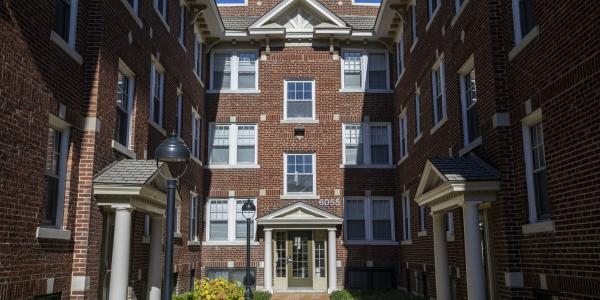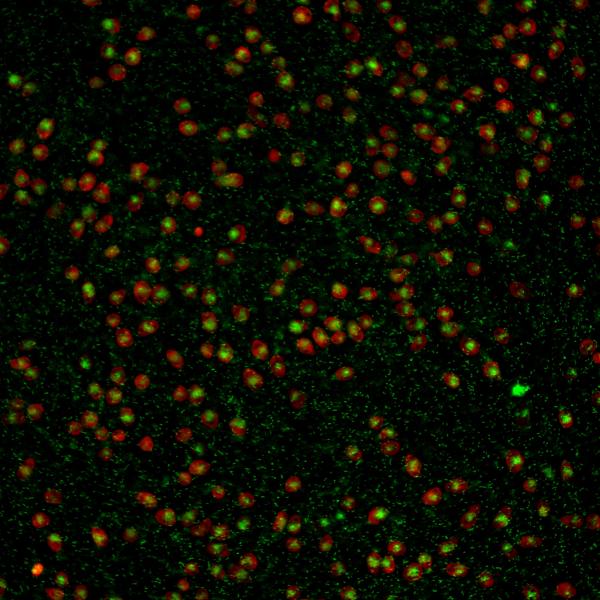WashU research shows both Black, white St. Louisans prefer predominantly white neighborhoods.
Housing websites, like Zillow, screen listings for discriminatory language that violates the Fair Housing Act. Yet even without explicit discriminatory language, many online listings still reflect the implicit bias landlords and their renters have about neighborhoods based on their racial and socioeconomic makeup, according to Ariela Schachter, an associate professor of sociology in Arts & Sciences at Washington University in St. Louis.

Schachter’s new paper, “What’s in a name? Place misrepresentation and neighbourhood stigma in the online rental market,” shows that one way some landlords do this, intentionally or not, is by what information they include or exclude in the listing. The paper was first published online in the journal Urban Studies with researchers from Michigan State University and the University of Wisconsin-Madison.
Analyzing more than 94,000 Craigslist rental housing advertisements in St. Louis city from 2017-2020, they found that listings in neighborhoods with higher shares of poor and Black residents are less likely to include a neighborhood name.
By comparison, neighborhoods with higher shares of college-educated residents are more likely to claim a neighborhood name in online rental postings. What’s more, nearby listings often reference those more desirable neighborhood names, even though they are not located within the neighborhood proper.
“Neighborhood names are imbued with information; for example, research finds that people make assumptions about others just based on knowing where they live. And when someone is looking for a home to rent, the neighborhood name is often one of the first pieces of information they look for because it helps form their impression of the area as a desirable or undesirable place to live,” Schachter said.
The researchers chose to focus on St. Louis because it is a large metropolitan area with long-standing high levels of residential segregation, meaning certain neighborhoods are more likely to be associated with particular racial groups. Also, the city is almost evenly divided across non-Hispanic white residents — 44.3% of the city — and Black residents — 44.8%.
According to their analysis, the neighborhood that is most often erroneously “claimed” is the Central West End — one of the most sought-after neighborhoods in St. Louis, with high percentages of college-educated and white residents. Of the 39,407 listings that mentioned the Central West End, only 19,433 listings were located within the defined neighborhood lines. More than 50% of the listings for the Central West End — 19,974 — were located outside of that neighborhood.
In north St. Louis city, an area where the majority of residents are Black and poor, the most common strategy for managing neighborhood reputations was to avoid listing a neighborhood altogether. In the predominantly white neighborhoods of south St. Louis city, the listings were more likely to falsely claim a more prestigious neighborhood name than avoid listing one. In some cases, it’s possible that there is legitimate ambiguity about neighborhood boundaries, according to the researchers. But given the frequency of listings with missing or incorrect neighborhood names, there are likely other motivations at play.
“Landlords may just be trying to protect their bottom line, and these practices are not illegal. But regardless of intent, by reflecting and reproducing existing segregation, these actions contribute to ongoing residential inequality and the stigmatization of predominantly Black neighborhoods in St. Louis,” Schachter said.
Loaded neighborhood names
In addition to the content analysis, the researchers also conducted experiments with St. Louis residents to better understand their perceptions of neighborhoods and how these marketing strategies shaped their interest in particular online listings.
From the first survey, they found that neighborhoods with more Black residents are perceived as less desirable by both white and Black St. Louisans. According to Schachter, those perceptions are often reinforced by landlords and real estate agents who use both coded and explicit language when evaluating neighborhoods and discussing them with home seekers as well as with the media.
Next, they presented respondents with real rental listings from the Central West End (CWE) and neighboring DeBalivere Place. Respondents were randomly assigned to view one of four listings: DeBalivere Place listing with DeBalivere Place location; DeBalivere Place with CWE location; CWE and CWE location; and CWE with DeBalivere Place location.
From this experiment, they found that false claims of highly desirable neighborhoods do not, on their own, increase a unit’s perceived desirability. Yet neighborhood names, in conjunction with other content in rental unit advertisements, seem to influence the perceptions of desirability, especially for white St. Louisans.
In their final experiment, they compared the effects of claiming north St. Louis, St. Louis or “The Greater Ville,” a real north St. Louis neighborhood whose name was not well known. Among all respondents, they found that the generic phrase “North City” was viewed as the least desirable. St. Louis city or The Greater Ville were viewed as significantly more desirable than North City and similar to each other.
According to the authors, listings that included North City led both white and Black St. Louisans to believe the rental unit was located in a neighborhood with lower average incomes, more Black residents and higher crime rates. Without much information about the The Greater Ville, respondents were less likely to come to the same conclusions about the listing.
The authors said they suspect that similar racialized naming practices occur in rental markets throughout the metropolitan United States. More work is needed to understand whether and how the unique context of St. Louis shaped their findings.
“The racialized (in)visibility of neighborhoods is one way that the housing market both reflects and reproduces residential racial segregation and inequality,” Schachter said.
“Addressing these issues will require large-scale changes to how the housing market operates. But individuals can take the first step by making an effort to explore their city and venture into neighborhoods that might be in their racial ‘blind spots’.”




